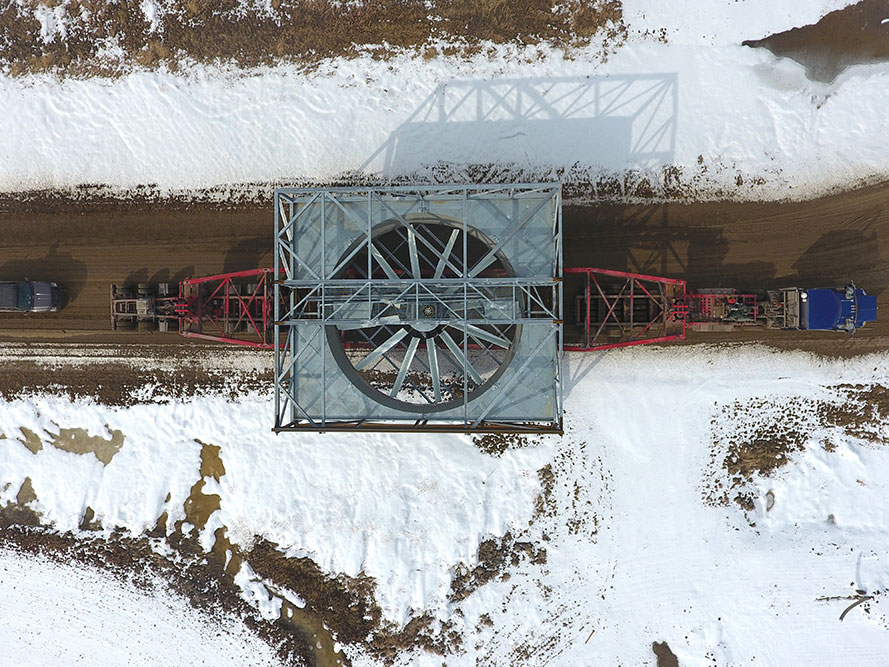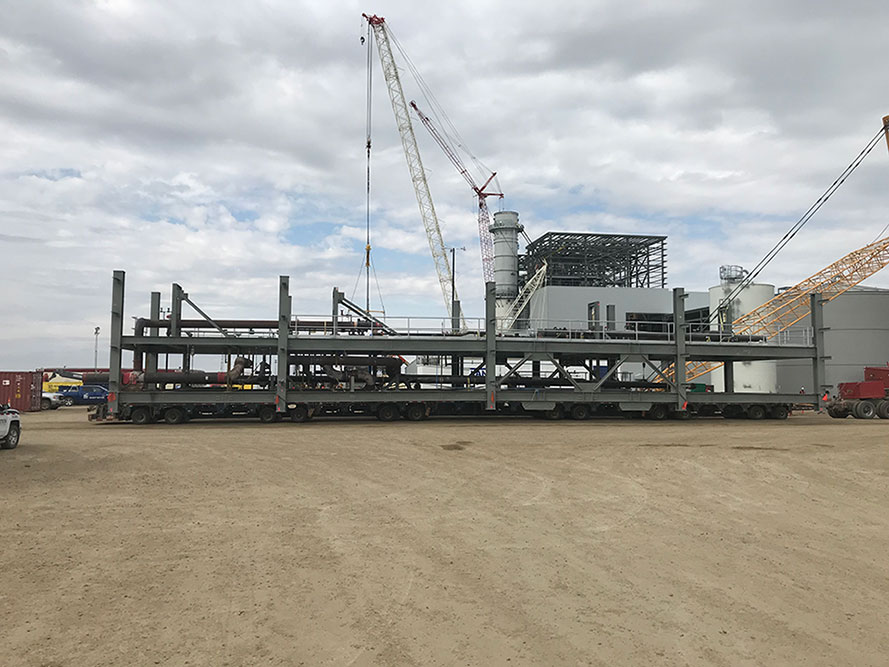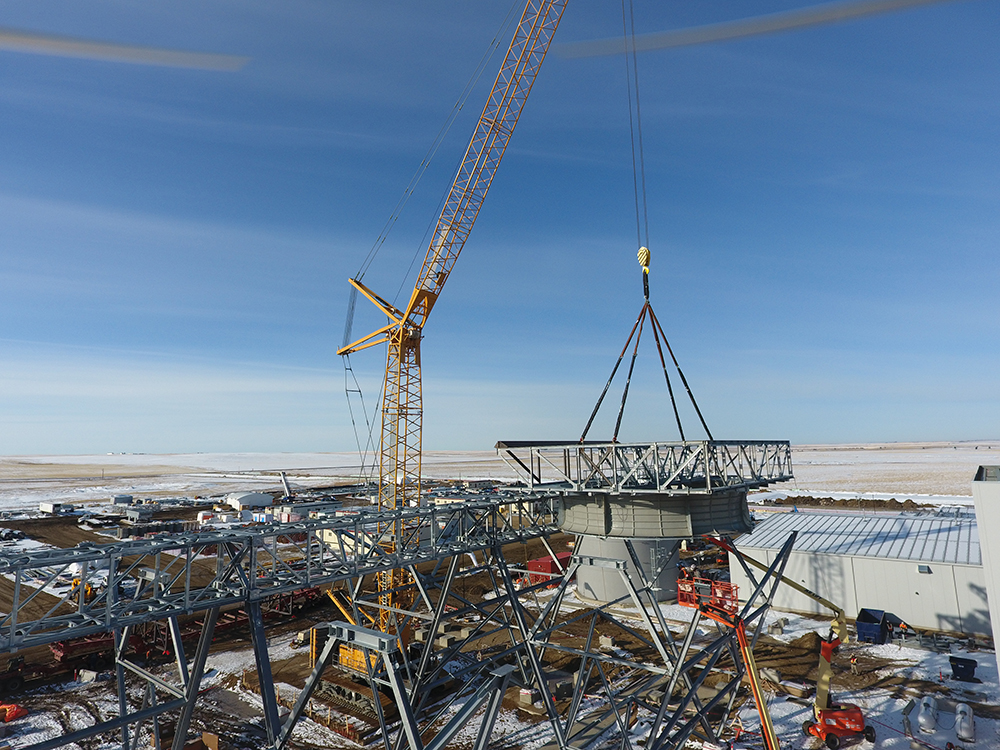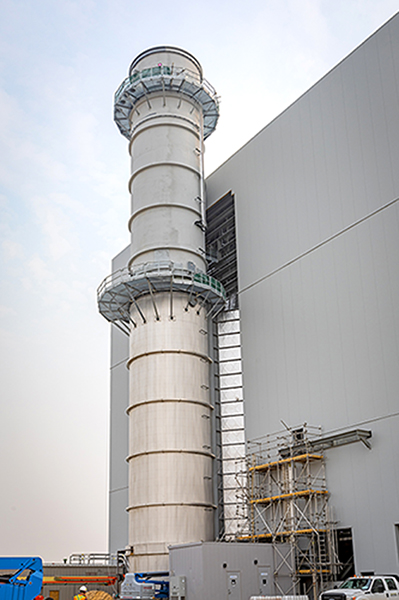MITIGATING RISK WITH MODULAR CONSTRUCTION
Construction of new power plants, or other complex facilities, can hit snags due to weather and unpredictable skilled labor pools, potentially increasing budgets and extending schedules. Modular construction can offer predictable results and mitigate safety risks when approached with proper planning and management considerations.



Constructing large, complex facilities, such as new power plants, on schedule and on budget is highly dependent on numerous factors, including weather and the availability of skilled labor. Modular construction, which is widely used within the oil and gas industry, helps mitigate these variables through control and consistency that enhances work-site safety, quality and predictability of construction results. This white paper examines modular construction opportunities within the power industry and key considerations for planning and managing these types of projects.
ADDRESSING LABOR CHALLENGES
Availability of skilled labor is highly dependent on location. Additionally, there is an industrywide skills gap between highly experienced labor from the baby-boom generation and the capabilities and experience of workers from subsequent generations. When considering that each job site is unique, experience and quality become key concerns.
Traditional field construction methods have different people doing different tasks on different job sites. Fabrication shops are set up to produce specific types of work in a controlled and consistent manner, similar to a factory setting. Workers within these shops are performing the same operations day in and day out, following structural processes and procedures that remove variability and enhance quality.
Completing fabrication work within off-site shops reduces the craft density at the construction site and minimizes work to be done at heights. Reducing the on-site density significantly reduces safety risks, particularly on space-constrained sites. Prefabrication also reduces weather-related risks because work is performed within a controlled environment.
FOCUS ON PLANNING
Introducing modularization into complex construction plans require an intense focus on scheduling, logistics and supply chain management. Often, the sequence of work must be modified. For example, detailed engineering on a combined-cycle facility using modularization must be completed three to four months earlier, depending on schedule. The reason is sub-components must be procured and built, then shipped to the fabrication facility for integration rather than simply procuring parts and sending them directly to the construction site.

CASE STUDY: CHINOOK POWER STATION
SaskPower, the sole energy supplier in Saskatchewan, is working to reduce emissions and integrate greater levels of renewable energy. The new Chinook Power Station is an integral project that will enable SaskPower to meet its regulatory and environmental objectives. Large portions of this facility, such as pipe racks, electrical enclosures and air-cooled condenser modules, were constructed off-site in a controlled environment and then transported to the main construction site.
The use of prefabrication reduced weather-related risks associated with Saskatchewan’s intense and long winter season. Prefabrication within a controlled environment also enhanced overall project safety and quality.
The need to complete detailed engineering earlier in the project requires close collaboration and consolidation of procurement activities. Traditionally, asset owners directly procure engineered equipment, such as a combustion gas turbines, steam turbines and heat recovery steam generators, for their facility. However, this can create complications that impact schedule and construction because the contractor does not have the ability to directly obtain critical equipment data or manage the schedule.
Long lead-time items are of particular importance, further impacting the sequence of design. These long lead-time items, such as alloy piping, may need to be among the first items designed so they can be procured and built into the module, even if these items traditionally would be delivered to the site later in the project.
Supply chain quality and control is essential for maintaining costs and schedule. A risk tolerance matrix enables the team to identify potential or previous issues with a specific supplier and work in collaboration with that supplier to mitigate risk. For example, the contractor can arrange to have an inspector or representative within a fabrication shop to verify that weld procedures for P91 tubing are completed correctly.
INVESTING IN CONTROL FOR PREDICTABLE RESULTS
A thorough cost assessment is necessary to determine if a modular construction approach would be the most cost-effective option. A modular approach has the potential to generate significant transportation costs that should be weighed against availability of labor — on-site versus off-site — and other project risks, such as extreme weather that could delay the project.
Modularization can benefit projects of all sizes. Prefabrication shops can replicate and scale output based on project needs while maintaining consistent quality. Work within the prefabrication shops lessens potential weather-related delays and can significantly reduce labor density on the project site, reducing safetyrelated risk. However, contractors and clients interested in pursuing modular construction techniques must have strong project management, supply chain management and logistical controls to make sure materials are sent to the locations needed, when they are needed, to maintain the project schedule.







